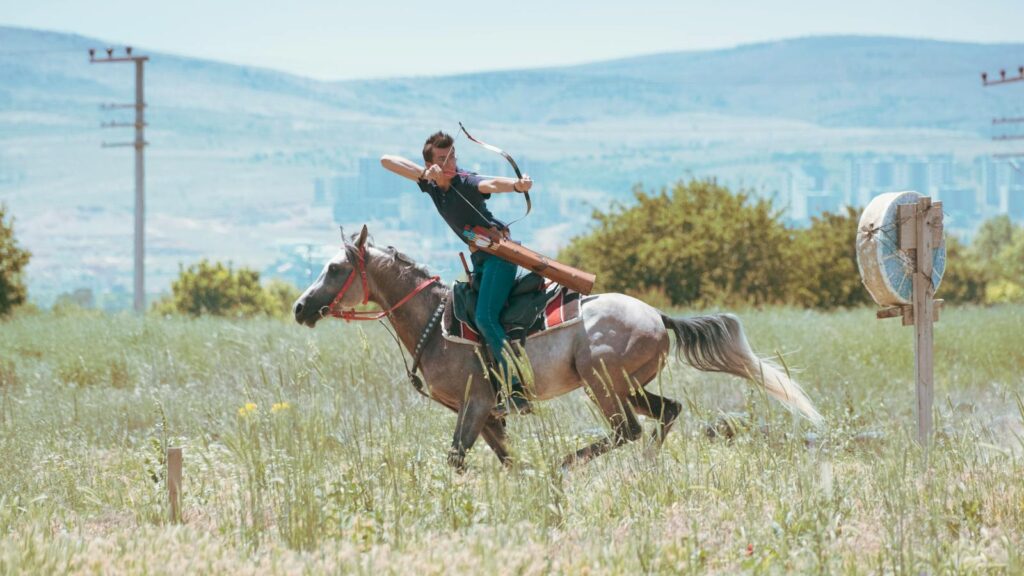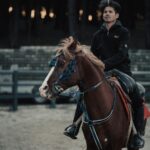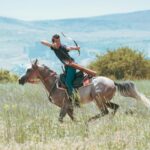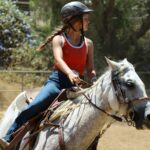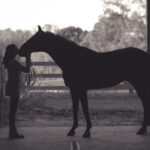The thundering hooves, the whistle of arrows cutting through air, and the perfect harmony between rider and horse—horseback archery represents one of humanity’s oldest martial arts, dating back thousands of years to ancient civilizations from the Eurasian steppes to the Japanese plains. Once a crucial military skill that helped build empires like the Mongols’ and a hunting necessity for many cultures, mounted archery largely disappeared with the advent of firearms. However, in recent decades, this ancient discipline has experienced a remarkable renaissance. What was once primarily preserved in cultural demonstrations and historical reenactments has evolved into a vibrant competitive sport and passionate hobby practiced across continents. This revival combines athletic prowess, historical appreciation, and a unique connection between human and horse that resonates with modern enthusiasts seeking both physical challenge and deeper connection to traditional skills.
The Ancient Roots of Mounted Archery
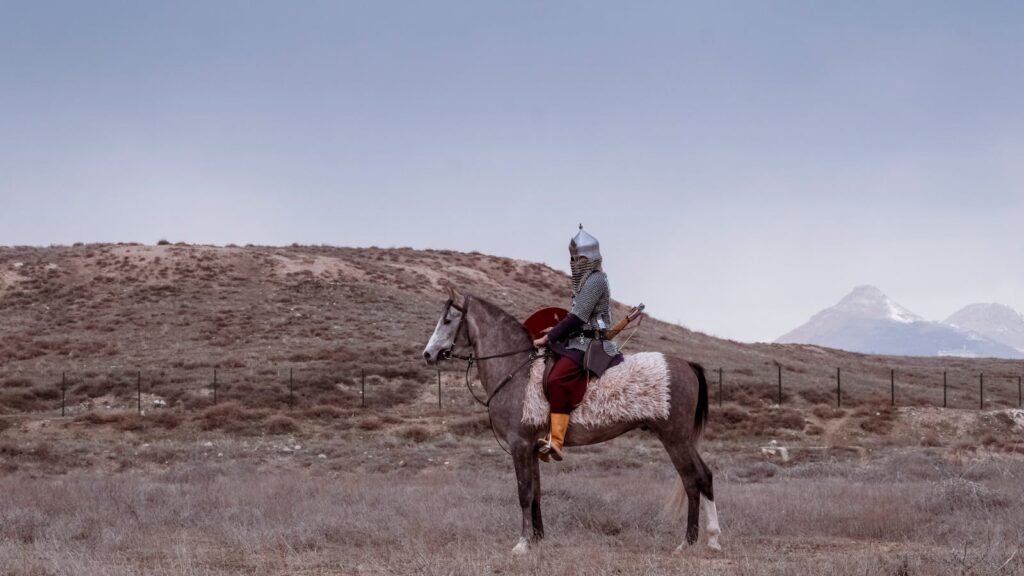
Horseback archery’s origins stretch back at least 5,000 years to the nomadic peoples of the Central Asian steppes, where it revolutionized warfare and hunting. Archaeological evidence from cultures like the Scythians shows sophisticated equipment and techniques that allowed riders to shoot with deadly accuracy while galloping at full speed. As horse-riding cultures spread across Asia, Europe, and the Americas, distinctive styles developed—from the Mongolian tradition of shooting in all directions while riding, to the Parthian shot (shooting backward while retreating), to the Japanese yabusame ceremonial style. These mounted archers dominated battlefields for centuries, with the Mongol Empire under Genghis Khan perhaps representing the pinnacle of this military form, conquering vast territories largely due to their superior mounted archery skills. The cultural significance of horseback archery extended beyond warfare, becoming intertwined with religious ceremonies, coming-of-age rituals, and demonstrations of nobility in many societies.
The Decline and Near Disappearance
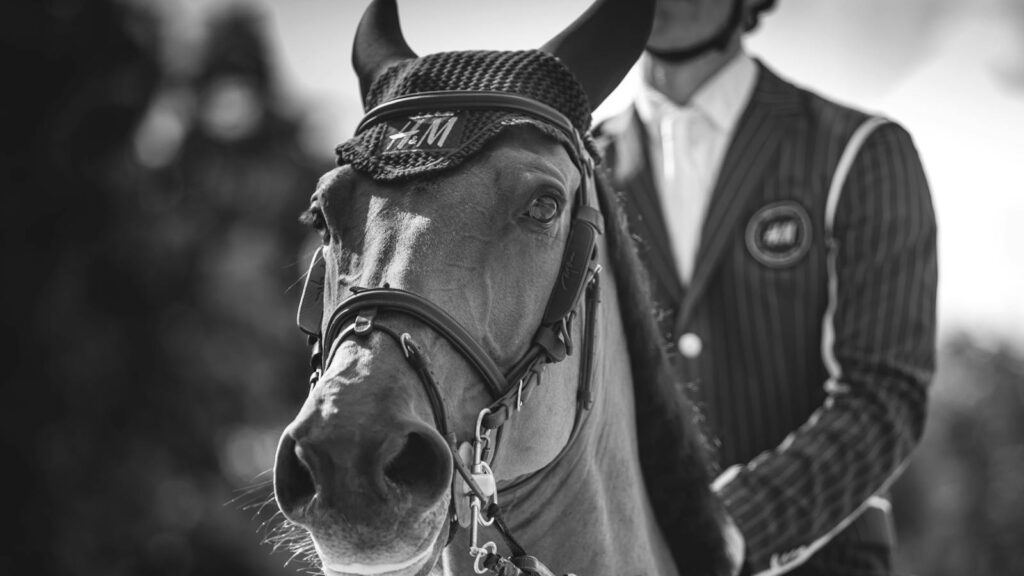
The development of gunpowder weapons beginning in the 14th century marked the beginning of the end for horseback archery as a military discipline. Firearms gradually rendered bows obsolete on battlefields across the world, though the transition took centuries in some regions. By the 19th century, horseback archery had largely disappeared from military use, surviving primarily in ceremonial forms in places like Japan, Korea, and parts of Central Asia. The industrialization of warfare and transportation further diminished the practical need for mounted archery skills, relegating them to cultural curiosities rather than living traditions. Even in countries with strong equestrian cultures, the combination of riding and shooting became increasingly rare, with the skills often separated into distinct disciplines of horsemanship and archery. By the mid-20th century, authentic horseback archery was practiced by only a handful of cultural preservation groups, mostly disconnected from one another and focused on maintaining their specific regional traditions.
The Modern Revival Movement
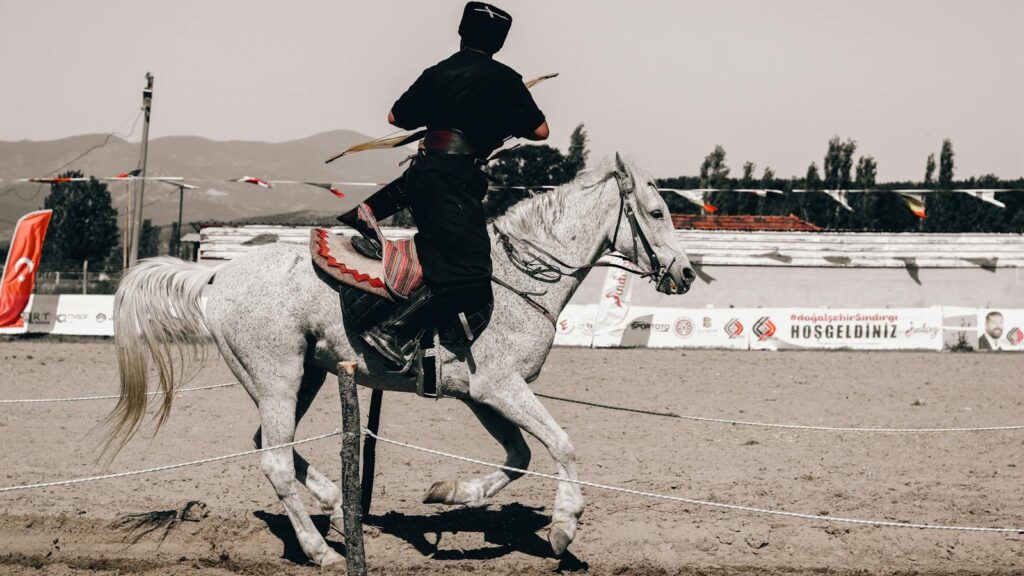
The revival of horseback archery as a modern sport began in earnest during the 1990s, sparked by pioneering enthusiasts like Kassai Lajos in Hungary and Toshihiko Tokura in Japan who systematized training methods and competitive formats. Organizations like the International Horseback Archery Alliance (IHAA), founded in 2013, have helped standardize rules and connect practitioners worldwide, facilitating the sport’s rapid global expansion. The fall of the Soviet Union also played a surprising role, as it allowed renewed interest in traditional practices from Central Asian republics like Kazakhstan and Kyrgyzstan, where horseback archery had deeper historical roots. Social media and the internet have accelerated this revival dramatically, allowing techniques to be shared globally and competitions to be organized across borders with unprecedented ease. What began as isolated revival efforts has transformed into a cohesive international movement with thousands of practitioners across dozens of countries, annual world championships, and an increasingly sophisticated approach to equipment, training, and performance standards.
Different Styles and Traditions
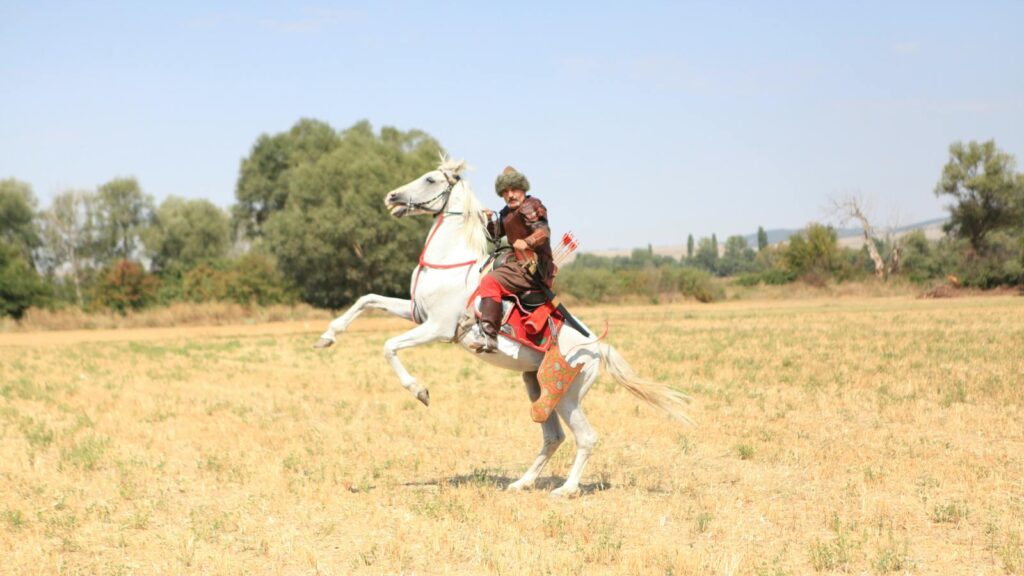
Modern horseback archery embraces several distinct styles that reflect different historical and cultural traditions. Hungarian-style horseback archery, pioneered by Kassai Lajos, typically features straight tracks with targets positioned on one side, emphasizing speed and accuracy while shooting from a consistent angle. Korean horseback archery draws from that country’s tradition of mounted archery examinations for military officials, featuring multiple arrow shots at a single target while riding at considerable speed. Japanese yabusame represents one of the most ceremonial styles, with archers in traditional samurai attire riding down a straight track and shooting at wooden targets, all within a Shinto religious context. The Mongolian style often involves shooting in multiple directions (forward, to the sides, and backward) while controlling the horse with leg pressure alone, reflecting the battlefield versatility required of steppe warriors. Persian and Turkish styles have their own distinctive features, from specialized bow designs to particular riding postures that have been reconstructed from historical sources and illustrations.
Equipment Evolution
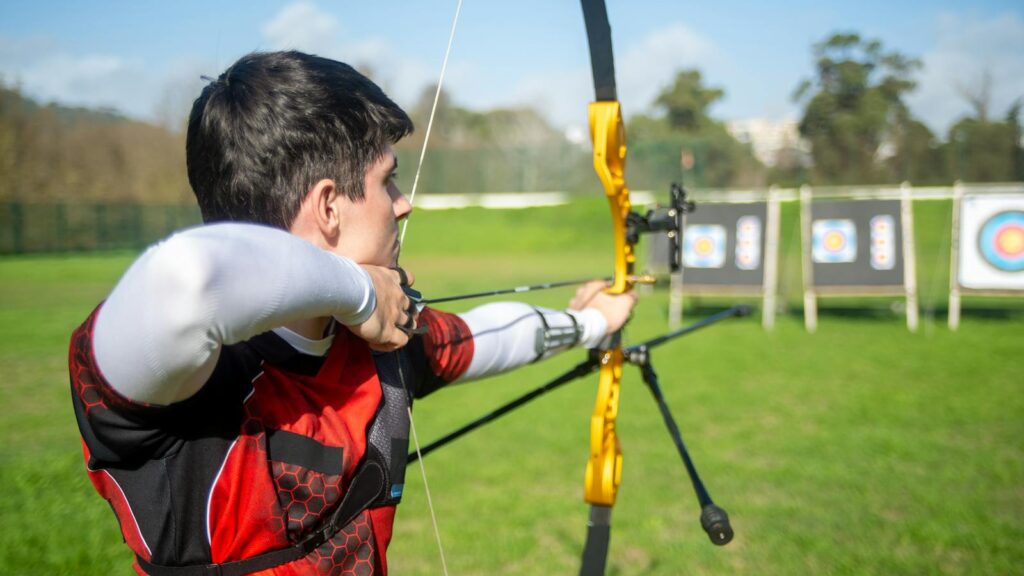
The equipment used in modern horseback archery represents a fascinating blend of historical authenticity and contemporary innovation. Traditional composite bows made of layers of horn, wood, and sinew have been largely replaced by modern reproductions using fiberglass and synthetic materials that offer similar performance characteristics without the sensitivity to humidity or the extensive crafting time. Arrows have likewise evolved, with many competitors using carbon or aluminum shafts fitted with historically-inspired points and fletching patterns that balance authenticity with consistent flight performance. Modern safety equipment, including specialized helmets and protective vests, has been incorporated without compromising the sport’s traditional aesthetic. Horse tack has perhaps seen the most interesting adaptations, with many riders using minimalist setups that allow for greater freedom of movement while maintaining control—often including bitless bridles, specially designed saddles with minimal pommel and cantle, and adapted stirrups that help maintain stability during the shooting motion. This equipment evolution reflects the sport’s balance between honoring historical practices and adapting to contemporary safety standards and performance requirements.
The Physical and Mental Challenge
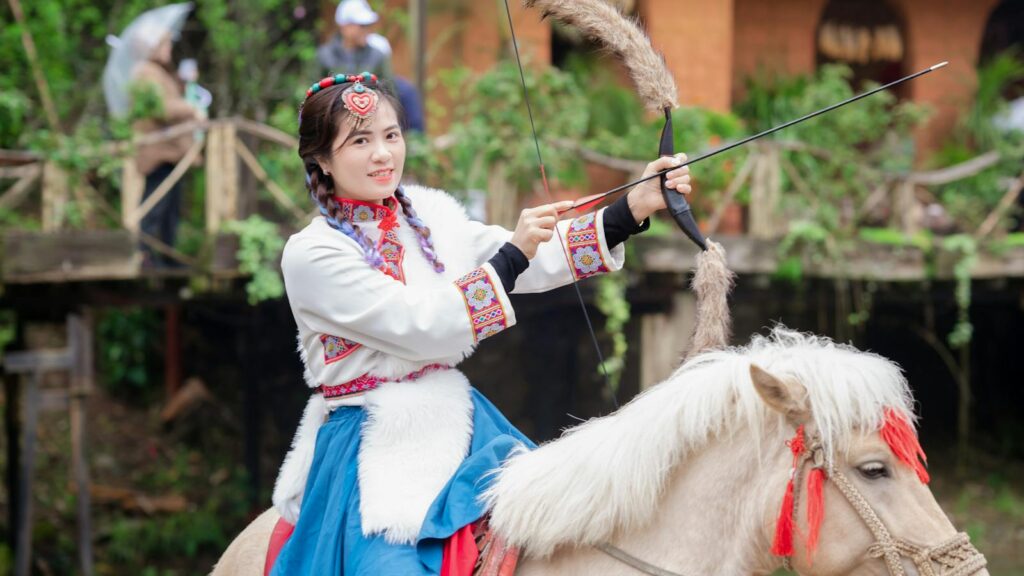
Mastering horseback archery presents a formidable physical and psychological challenge that few other sports can match. The archer must simultaneously control a galloping horse (often using only leg pressure), maintain balance while drawing a powerful bow, and acquire targets within split seconds—all while the ground rushes by at speeds approaching 30 miles per hour. The physical demands include core strength to maintain posture, upper body power for drawing the bow, and lower body stability for directing the horse, creating a full-body workout that builds functional fitness. Mentally, the sport requires extraordinary focus, as the archer must process multiple sensory inputs at once and make split-second adjustments while controlling anxiety and maintaining rhythm. The relationship between horse and rider adds another complex dimension, requiring deep non-verbal communication and mutual trust developed through countless hours of training together. Many practitioners describe achieving a flow state during successful runs, where conscious thinking fades away and instinctive action takes over—a meditative quality that many find as rewarding as the physical accomplishment itself.
Competitive Formats and Scoring
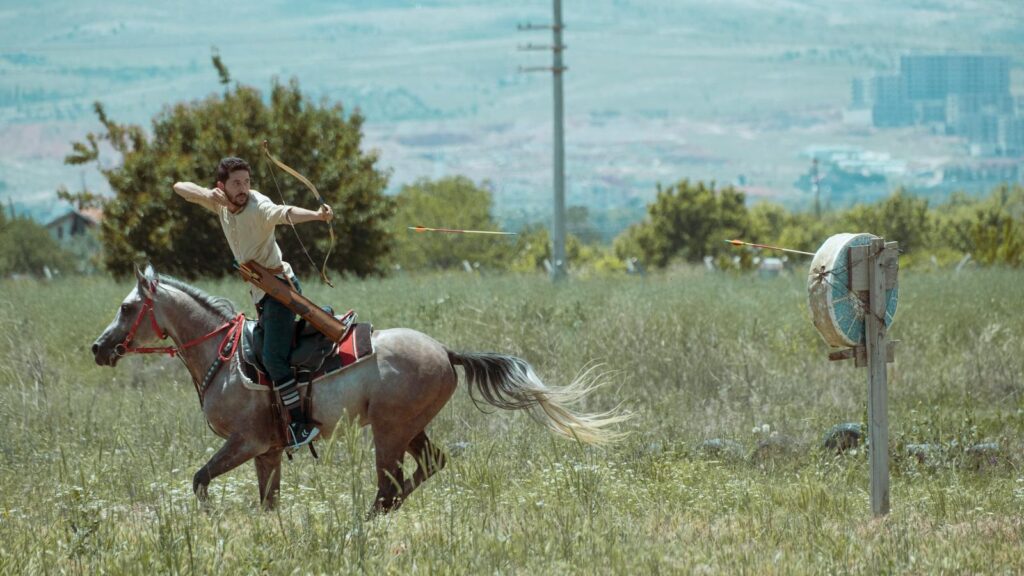
Contemporary horseback archery competitions have developed standardized formats that test different aspects of this multifaceted skill. The Korean track typically features a 150-meter course with multiple shots at a single target, emphasizing consistency and focus under speed. The Hungarian track presents a 90-meter straight course with targets positioned on one side, requiring rapid nocking and shooting while maintaining forward momentum. The Polish track introduces targets on alternating sides, forcing competitors to shift their shooting position while maintaining speed and accuracy. Scoring systems generally award points for both accuracy (with concentric rings on targets offering different point values) and speed (with time bonuses or penalties depending on the format), creating a balanced assessment of overall skill. International competitions often include multiple event types, with combined scores determining overall champions, though specialists in particular styles can still excel in their preferred format. The World Horseback Archery Championship, held annually in different host countries, has become the premier event in the sport, attracting hundreds of competitors from dozens of nations and showcasing the highest level of performance in all major competitive formats.
Training Methods and Progression
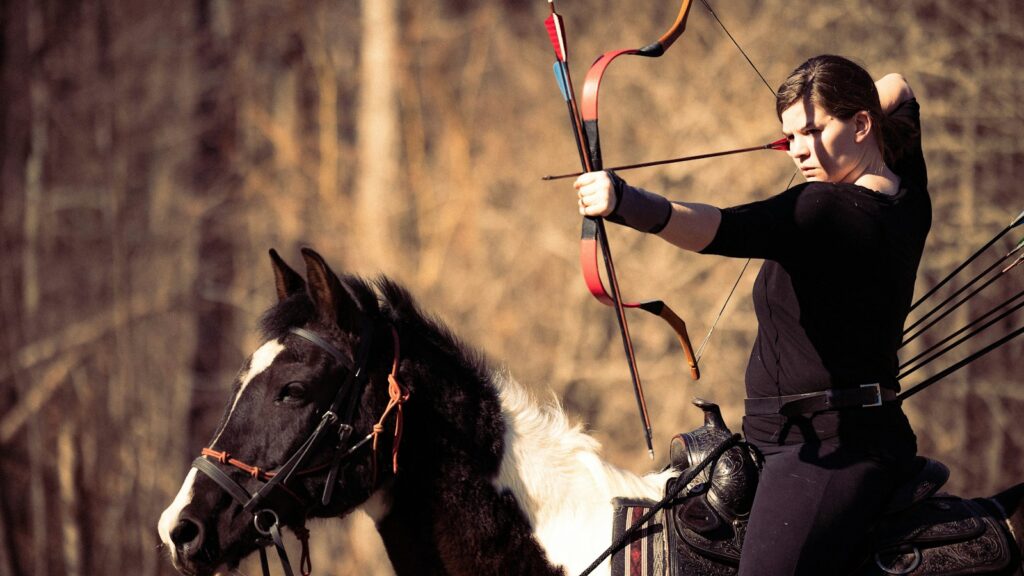
Modern horseback archery instruction follows a methodical progression that breaks down this complex skill into manageable components. Most beginners start on the ground with standard archery training, developing proper draw technique and accuracy before introducing the complexities of horseback shooting. Simulator training often follows, with practitioners shooting from barrels or platforms that mimic the motion and height of horseback position. The mounted phase typically begins at a walk, with riders learning to control the horse with minimal hand guidance while drawing and shooting. Speed increases gradually as skills develop, progressing through trot, canter, and finally gallop as the archer builds confidence and muscle memory. Most training programs emphasize that horseback archery is actually three distinct disciplines that must be mastered separately and then integrated: horsemanship, archery, and the specialized skill of combining them. Video analysis has become an important training tool, allowing archers to study their form and timing with a precision impossible in earlier revival efforts, accelerating the learning curve for serious practitioners.
The Cultural Impact and Heritage Preservation
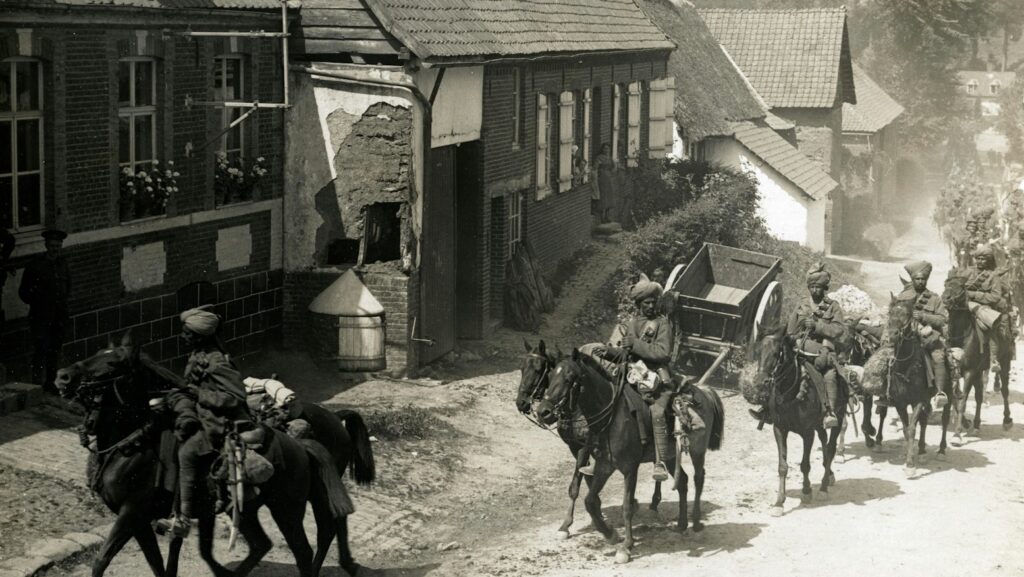
Beyond its sporting aspects, the horseback archery revival serves as a powerful vehicle for cultural preservation and historical understanding. In countries like Mongolia, Hungary, and South Korea, the resurgence of mounted archery has reconnected younger generations with traditional practices that were at risk of being lost entirely, creating a living link to their ancestral heritage. Historical reenactment groups have embraced horseback archery as a way to more authentically portray the military capabilities of past cultures, moving beyond costume and static displays to demonstrate the dynamic skills that shaped history. Museums and cultural heritage sites increasingly feature horseback archery demonstrations that bring history to life for visitors, creating memorable experiences that textbooks and static displays cannot match. The cross-cultural nature of the modern revival has also created fascinating exchanges, with practitioners traveling internationally to learn techniques from other traditions and bringing those influences back to their home countries, creating a global conversation about this shared human heritage that transcends national boundaries.
Community Building and Demographics
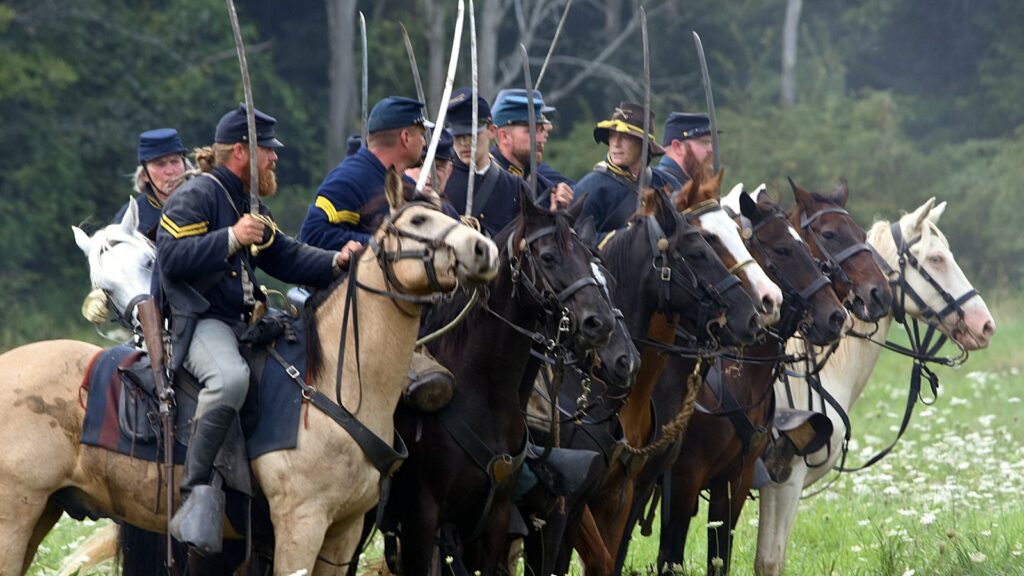
The horseback archery revival has created vibrant communities that span continents and demographic boundaries. Unlike many equestrian sports with significant gender imbalances, horseback archery attracts nearly equal numbers of men and women, with competitions typically featuring mixed divisions where all compete on equal footing. The age range is remarkably broad, with successful competitors ranging from teenagers to practitioners in their seventies, as technique and experience can often compensate for differences in raw physical strength. Socioeconomically, the sport remains relatively accessible compared to many equestrian disciplines, with some clubs offering shared horses and equipment to reduce entry barriers. The community aspect extends beyond competition, with training camps, seminars, and festivals that combine skill development with social bonding through shared passion for this ancient art. Online communities have played a crucial role in connecting isolated practitioners, with social media groups and forums allowing instant sharing of videos, techniques, and event announcements across national and linguistic boundaries.
Technological Contributions to the Revival
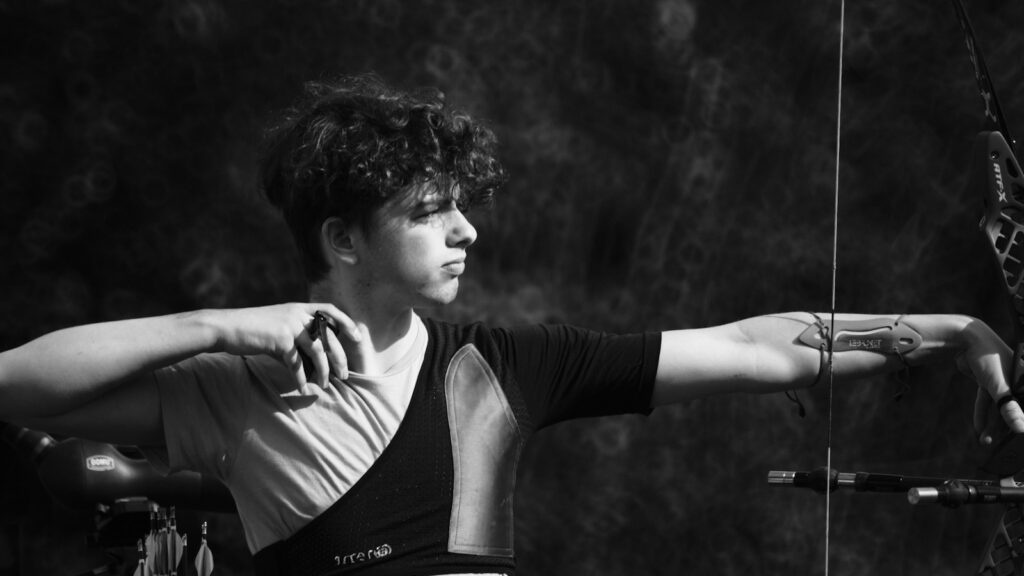
Modern technology has played a surprisingly important role in facilitating the horseback archery revival. High-speed photography and video analysis allow archers to study their technique in microscopic detail, identifying subtle flaws in form or timing that would be impossible to detect otherwise. Computer-aided design and modern materials science have enabled the creation of bows that closely mimic the performance characteristics of historical weapons while offering greater consistency and durability. GPS tracking and smartphone applications help riders maintain consistent speeds during training and competition, providing immediate feedback that accelerates skill development. Social media platforms have been perhaps the most transformative technological contribution, allowing a previously fragmented community of enthusiasts to connect globally, share knowledge, organize events, and build a cohesive movement that transcends geographical limitations. Online translation tools have further broken down barriers, allowing instructional materials and competition rules to be shared across language divides that would have previously limited the sport’s international development.
Horseback Archery in Popular Culture
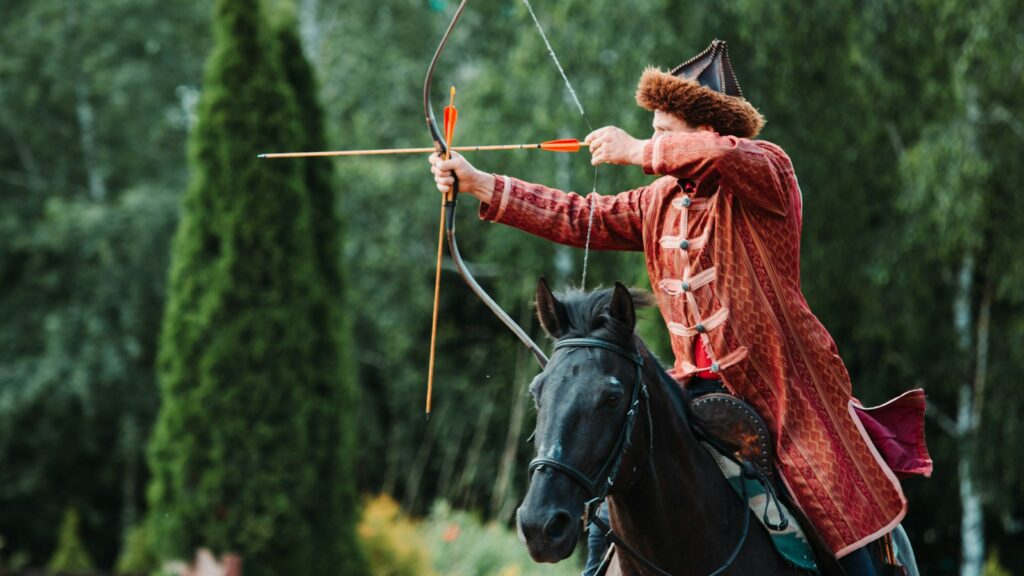
The visual drama of horseback archery has increasingly captured the imagination of filmmakers, game designers, and other cultural creators. Movies like “The Lord of the Rings,” “Mulan,” and various historical epics have featured horseback archery scenes that, while not always technically accurate, have introduced millions of viewers to the concept and aesthetic of mounted archery. Television programs exploring historical martial arts or cultural traditions frequently showcase horseback archery demonstrations, often becoming viral content when shared online. Video games featuring open-world historical settings increasingly include mounted archery as both gameplay elements and historical details, exposing new generations to this ancient skill through interactive media. This popular culture visibility has created a feedback loop that benefits the sport’s growth, as people inspired by fictional portrayals seek out real-world horseback archery clubs and events. Several notable horseback archers have achieved social media fame through spectacular demonstration videos, further raising the profile of the sport and attracting new participants who might never have encountered it through traditional channels.
Future Prospects and Evolution
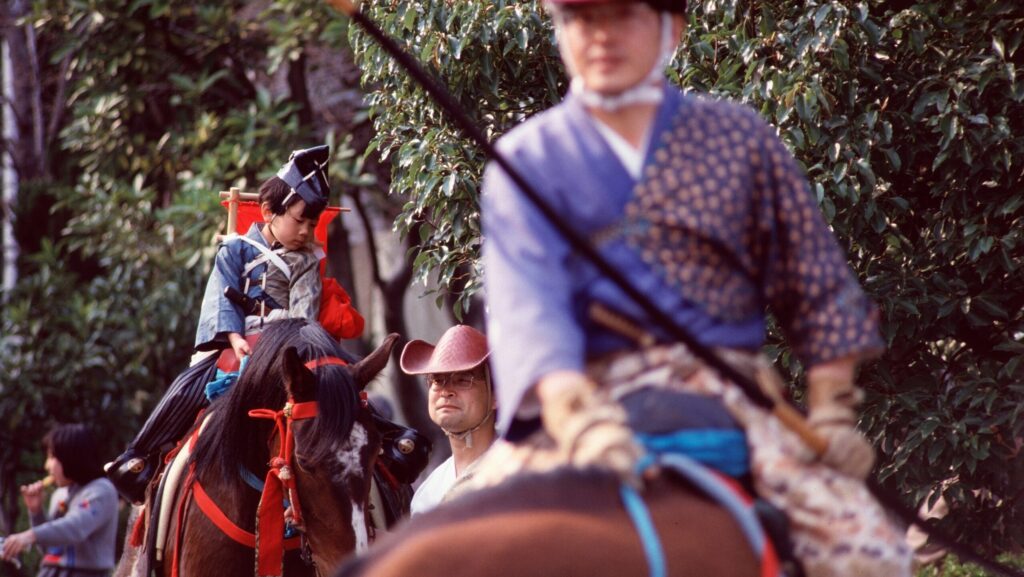
The future of horseback archery appears remarkably bright, with several trends suggesting continued growth and evolution. Increasing standardization of rules and equipment specifications is likely to continue, potentially leading to more formalized international competition structures and perhaps eventual Olympic recognition, though traditionalists and modernists sometimes disagree about how much standardization is desirable. Technological integration will likely accelerate, with tracking systems for scoring, performance analytics for training, and enhanced media coverage making the sport more accessible to spectators and participants alike. Regional variations will continue to thrive alongside standardized formats, with many practitioners valuing the cultural distinctiveness of different traditions even as they participate in international competitions. The educational potential of horseback archery is increasingly being recognized, with programs developing for young people that combine physical activity, historical education, and character development through this multifaceted discipline. As climate change and environmental concerns grow more prominent, the minimal environmental impact of horseback archery compared to many modern sports may also become an additional attraction for environmentally conscious participants seeking sustainable recreational activities.
Conclusion: Riding Ancient Skills into the Future
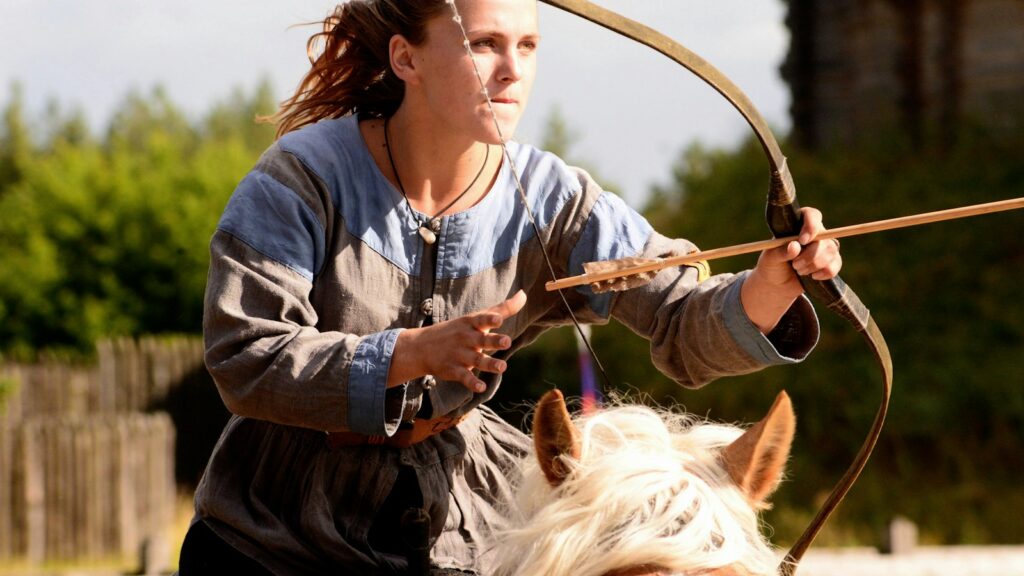
The global revival of horseback archery represents a fascinating example of how ancient skills can find new relevance in the modern world. What began as a practical necessity for warfare and hunting has transformed into a vibrant sport that combines physical challenge, historical connection, and community building across continents. The mounted archer embodies a unique synthesis of skills—the partnership with an animal, the mastery of a weapon, and the integration of movement and precision—that resonates deeply even in our technological age. Perhaps this explains the emotional response many feel when witnessing this ancient art; it connects us to human capabilities that predate our modern specialization and compartmentalization. As the sport continues to grow, evolving while honoring its diverse historical roots, horseback archery stands as a powerful reminder that sometimes the most meaningful innovations involve rediscovering and reimagining the wisdom of the past. In the thundering hooves and whistling arrows, past and present merge into a living tradition with a promising future.

